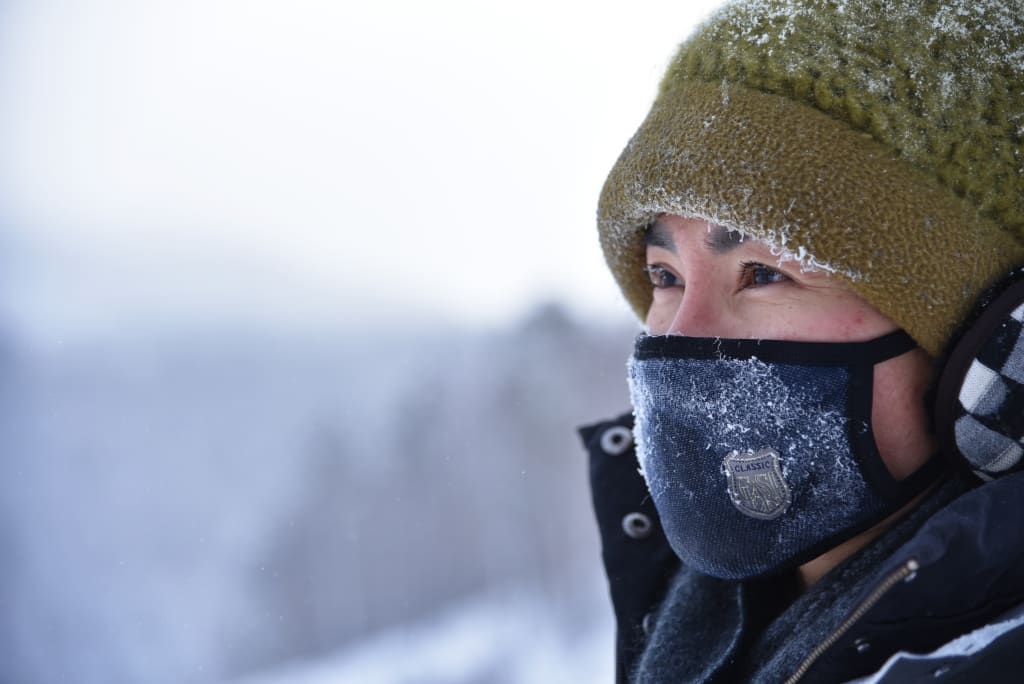Why it is impossible for our eyes to Freeze?
Eyes can’t Freeze

Our eyes don’t freeze primarily due to their continuous movement and the natural composition of their fluids. They are in constant motion, blinking and producing tears that help prevent freezing. Additionally, the eyes have a complex structure with a high water content, which resists freezing at normal temperatures. The eye's tear film, composed of water, oils, mucus, and antibodies, provides a layer of protection against freezing temperatures by maintaining a stable environment on the surface of the eye. The blood flow around the eyes also plays a role, helping to regulate temperature and prevent freezing. Moreover, the eye's unique design minimizes the risk of freezing by maintaining a delicate balance of temperature and moisture necessary for proper function.
The concept of the human eye freezing might seem plausible in extremely cold environments, but the eye is remarkably adept at avoiding freezing due to its intricate design and the body's mechanisms to protect it.
The eye, a complex organ, is composed of various components, each serving a crucial role in maintaining its functionality. To understand why the eye doesn't freeze easily, it's essential to delve into its structure and the surrounding mechanisms that protect it.
Firstly, the eye's continuous movement is a key factor. Blinking, a reflexive action, occurs approximately 15-20 times per minute in adults. This constant motion spreads tears across the eye's surface, preventing any stagnant moisture from freezing. Tears, essential for eye health, contain water, oils, mucus, and antibodies, creating a protective layer over the eye. The combination of these substances helps maintain a stable environment on the eye's surface, resisting freezing even in cold temperatures.
The high-water content of the eye is another crucial element. The cornea, the transparent front part of the eye, consists mostly of water. Water, known for its resistance to freezing at normal temperatures, acts as a natural barrier against the formation of ice crystals within the eye.
Furthermore, the eye's tear film plays a pivotal role in preventing freezing. This film coats the eye's surface, providing a shield against environmental factors. Additionally, the tears produced by the lacrimal glands contain lysozymes and other antimicrobial substances that protect against infections, contributing to the overall health of the eye.
The blood flow around the eyes is also significant. The eyes receive a constant supply of blood, ensuring that they maintain a relatively stable temperature. This circulation helps regulate the eye's temperature, preventing it from reaching levels where freezing becomes a risk.
Moreover, the eye's design minimizes the potential for freezing. Its structure and positioning within the skull help maintain a suitable temperature for the eye's delicate tissues. The body's ability to regulate temperature also contributes to safeguarding the eyes from freezing. When exposed to cold temperatures, the body's natural response includes constriction of blood vessels in the skin to conserve heat. However, blood vessels around the eyes tend to have a more controlled response, ensuring an adequate blood supply to maintain the eye's temperature.
In extreme cold conditions, the risk of frostbite to exposed skin is high. However, the eye's protective mechanisms, including the continuous production of tears and the movement created by blinking, play a crucial role in preventing the eye's surface from freezing. Even in severe cold, the eye's structure and the body's protective measures work together to maintain the necessary conditions for normal eye function.
In conclusion, while the idea of eyes freezing might seem plausible in harsh, freezing conditions, the eye's remarkable design and the body's protective mechanisms effectively prevent it from happening. Through continuous movement, tear production, high-water content, blood circulation, and the eye's unique structure, nature has equipped the eye with the necessary tools to resist freezing and maintain its functionality even in extreme cold.
About the Creator
Enjoyed the story? Support the Creator.
Subscribe for free to receive all their stories in your feed. You could also pledge your support or give them a one-off tip, letting them know you appreciate their work.






Comments
There are no comments for this story
Be the first to respond and start the conversation.